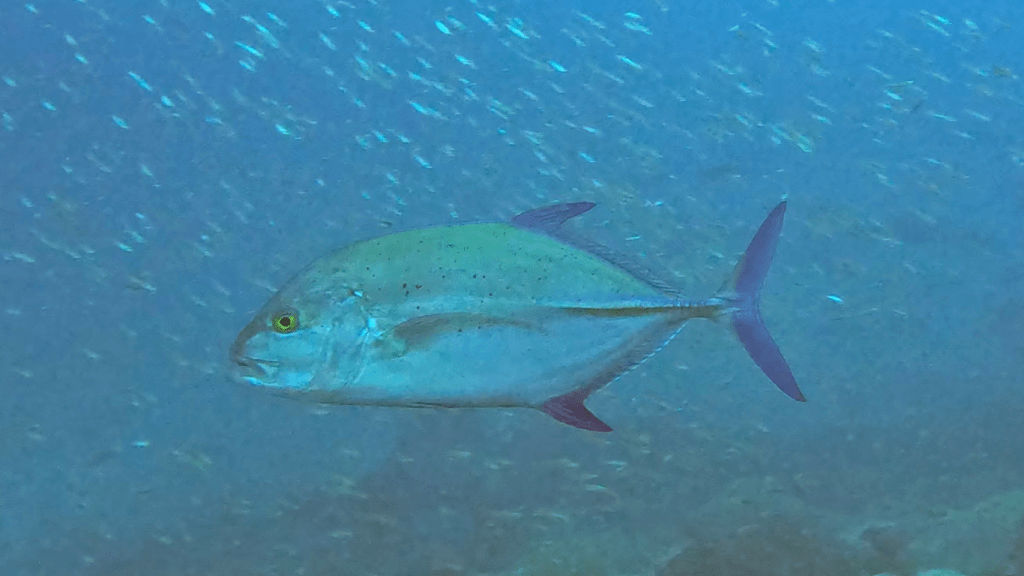Bluefin trevally

The Bluefin trevally, also known as the Spotted or Starry trevally (scientific name Caranx melampygus), is a species of marine ray-finned fish from the jack family (Carangidae). They inhabit the waters of the Indian and Pacific Oceans, ranging from the eastern coast of Africa to the western coast of Central America, including Japan to the north and Australia to the south. Diverse in their lifestyle, these fish can be found in bays, lagoons, near reefs, as well as around atolls and oceanic islands.
The maximum body length of the Bluefin trevally reaches 117 cm, and its weight can be up to 43.5 kg. They are characterized by a slightly pointed snout, bright blue fins, and the presence of numerous blue and black spots on the sides of their body.
These fish prefer coastal waters, including bays, lagoons, and reef areas, as well as oceanic islands. Juveniles prefer shallow bays and enter estuaries. Bluefin trevally are predators, with fish forming the main part of their diet, supplemented by a small amount of crustaceans. Their hunting behavior is varied, ranging from actively pursuing prey in the water to ambush tactics and cooperation with larger predators.
The appearance includes an oblong body, slightly compressed laterally, covered with small cycloid scales. The head and upper body of adult individuals are brassy-blue, dotted with bluish spots and black dots. Spots and dots appear at a standard length of 16 to 22 cm and increase in number as the fish grows. The lower part of the body and belly are silvery-white. The second dorsal, anal, and caudal fins are bright blue; the pelvic fins are whitish, and the pectoral fins are pale yellow. There is no spot on the gill covers (operculum). In juveniles and small immature individuals, the head and body are silvery-gray, and the fins are dark gray, except for the yellow pectoral fins.
